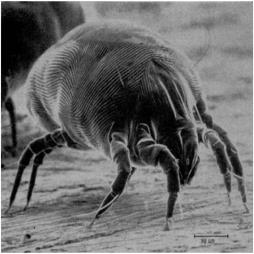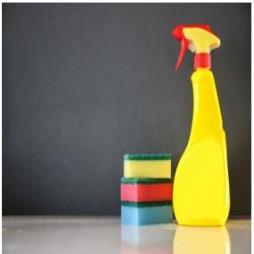Common Causes of Allergies in the Home
12-01-2015
There is nothing more annoying than starting the day with a multitude of sneezes, watery eyes and wheezing, but that is what happens to thousands of people across the UK every single day. But what is the cause? Pesky household allergies! Most homes contain allergens that we wouldn’t even have thought of.
Allergies can be a minor irritation, or they can become more serious, even life threatening in major cases, so it’s never a good idea to put up with them. In one of our previous blogs we discussed allergies at work, now however we’re going to reveal some of the causes of allergies in the home.
Dust Mites
Dust mites are microscopic insects and are actually one of the most common triggers of allergies and asthma. These creatures can be found anywhere in the home, however they are more likely to be found in soft furnishings and bedding. This insect thrives in humid environments and feeds on the skin flakes of humans found in dust.
Allergy Symptoms:
• Runny nose
• Stuffed nose
• Red itchy eyes
• Sneezing
Preventative Methods:
Try to keep your home as dust-free as possible, vacuum your carpets once a week, wear a dust mask while cleaning and purchase allergen-proof bedding.
Mould
Mould thrives in damp areas such as the bathroom, cellar, and loft; however it can also occur anywhere in the home. Many people suffer from mould allergies, and in some cases they can become extremely severe. The symptoms of mould allergies are very similar to dust allergies and can be experienced throughout the year, although it is more likely to be an issue throughout the damper autumn or winter months. Mould spores are microscopic particles which when touched or left to thrive can cause many problems.
Allergy Symptoms:
• Itchy eyes
• Eczema
• Asthma
• Rhinitis
These symptoms can develop into more serious conditions, it is therefore important to treat mould as soon as you notice it.
Preventative Methods
Minor mould growth can be cleaned with water and bleach; it is important to always wear rubber gloves when using cleaning chemicals and dealing with mould, dust or dirty surroundings in order to protect your skin. If mould spreads or it frequently returns, you must consult a professional. To prevent the growth of mould, areas need to be well-ventilated and cleaned regularly.
Pets
We all love our pets, however they are one of the largest causes of household allergies. Many people think that it is the hair of the animal that causes the allergy, when in fact it is the substance known as animal dander (small flakes of dead skin from the animal). Common household pets that cause allergies include; dogs, guinea pigs, rabbits, cats, hamsters, rats and even birds. Again, this form of allergy ranges from the sniffles to severe asthma.
Allergy Symptoms
• Sneezing
• Itchy red eyes
• Rashes
• Asthma
• Wheezing
• Coughing
Preventative Methods
If you haven’t bought an animal yet, choose a breed that is advertised as hypo-allergenic. If you have an animal make sure that you abide by the following rules; don’t let the pet on the furniture, avoid carpets and upholstered furniture. Keeping the home clean is essential so try to vacuum at least twice a week and make sure that someone who isn’t allergic to the animal grooms and cleans it.
Keeping your home dust-free and clean can prevent some of these allergens from harbouring in your home, making it a much safer and more comfortable environment. At Glove Club we provide a range of cleaning products, disposable gloves and all the equipment that you need to keep your home sparkling clean!Visit the The Glove Club website for more information on Common Causes of Allergies in the Home




